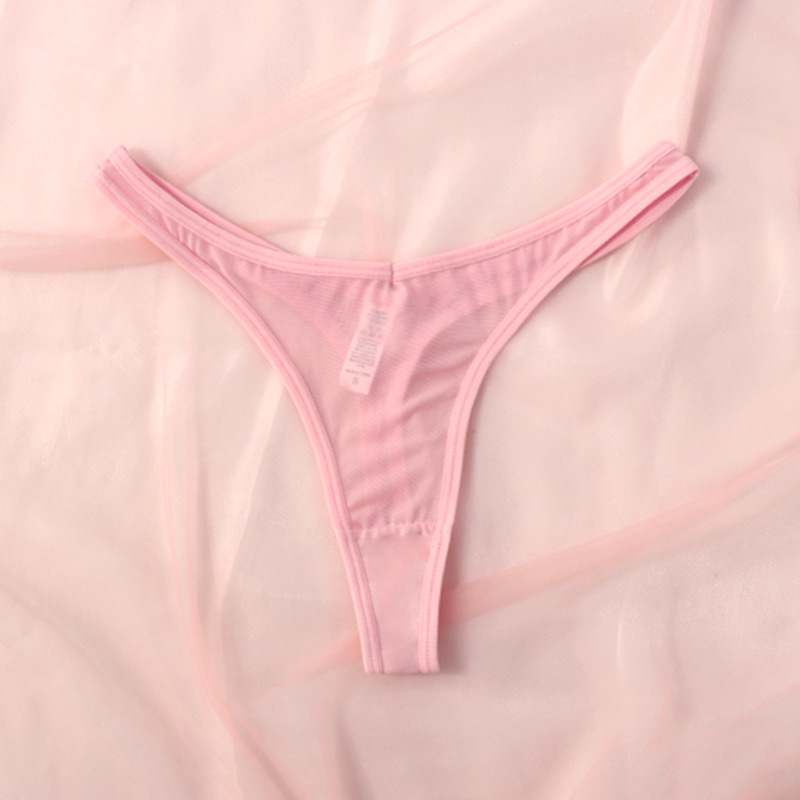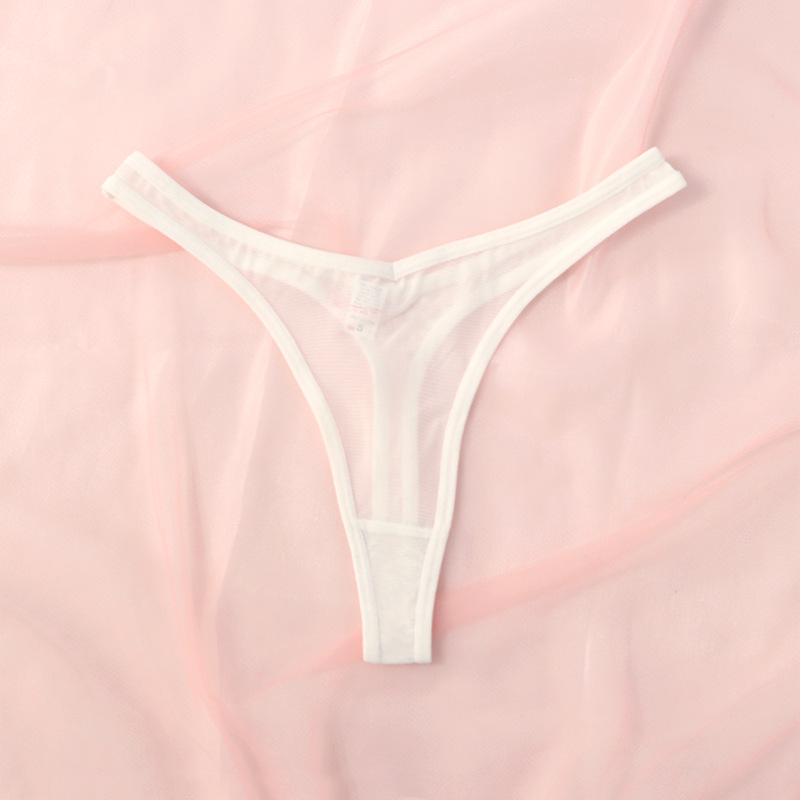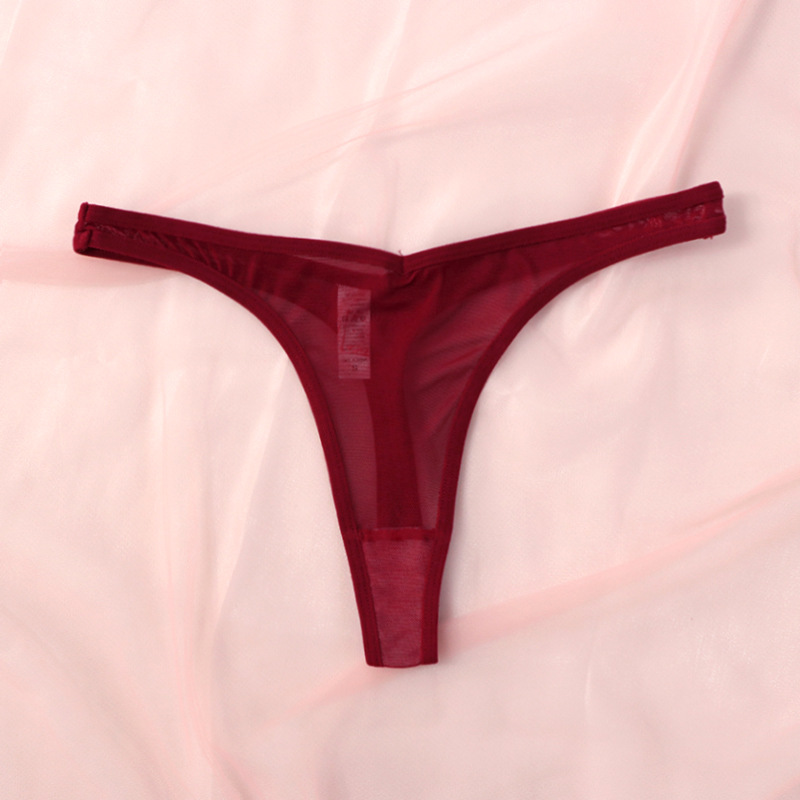Introduction to Thong Underwear
Thongs have taken the world of lingerie by storm, offering minimal coverage and a smooth silhouette. This style of underwear is a popular choice for its ability to vanish under tight-fitting clothes. Despite the minimal fabric, a well-designed thong can provide surprising comfort. Known for its distinctive ‘T’ shape at the back, thong underwear reduces visible panty lines. This feature makes thongs an ideal undergarment for form-fitting dresses or leggings. When chosen correctly, thongs can also be comfortable for everyday wear. The key lies in understanding the various types and materials, which we will explore in this guide. The rise of thong underwear in fashion has seen an evolution in design, catering to diverse body shapes and personal preferences. With options ranging from low-rise to high-waisted, and materials from cotton to lace, thongs have become a versatile addition to anyone’s wardrobe. As we delve further into the world of thong underwear, remember, comfort is paramount. Our guide aims to furnish you with needed knowledge, ensuring your thong experience is as comfortable as it is stylish.

The Different Types of Thong Underwear
When exploring the world of thong underwear, you’ll come across several types that cater to different preferences and occasions. Knowing the variations can help you find the perfect match for both comfort and style. Here’s a breakdown of the common types of thong underwear you might encounter:
- Traditional Thongs: Featuring a narrow strip of fabric at the back, these thongs provide minimal coverage. They’re great for reducing panty lines under tight clothing.
- G-String: Even more discreet than a traditional thong, the G-string has a very thin string at the back. It’s perfect for when you want to avoid panty lines completely.
- Tanga: Tanga thongs offer a bit more coverage than the classic thong with wider sides. They’re a comfortable option if you’re seeking a middle ground.
- Cheeky Thong: A cheeky thong is a blend between a standard thong and a bikini, offering moderate coverage at the back while still minimizing lines.
- Boyshort Thong: Combining the look of boyshorts with the functionality of a thong, this type is ideal for those who desire full coverage in the front but less at the back.
- High-Waisted Thong: A high-waisted thong sits above the hips, providing a smoothing effect and a touch of retro style. They’re great under high-rise pants or skirts.
Each type of thong underwear brings its unique benefits and feel. It is important to try different styles to understand which works best for you. Remember, the right thong should fit snugly without digging into your skin, and the fabric should feel comfortable against your body. As you consider these types, keep in mind the activities you’ll undertake while wearing them and choose accordingly for the ultimate blend of comfort and confidence.
Choosing the Right Thong for Your Body Type
Choosing thong underwear that complements your body type is crucial for comfort and confidence. To ensure the perfect fit, consider the following pointers for different body shapes:
- Petite Figures: Look for low-rise thongs that sit comfortably on the hips, preventing any overwhelming fabric bulk.
- Curvy Bodies: High-waisted thongs can provide the extra support needed, while helping to smooth out the waistline.
- Athletic Builds: Stretchable materials and wider waistbands on thongs will accommodate firm body types without cutting into the skin.
- Pear Shapes: Thongs with a wider waistband can balance out proportions and offer stability without creating unwanted lines.
- Plus Sizes: Seek out thongs specifically designed for plus-sized figures, ensuring they are stretchy and provide ample coverage where needed.
The key to picking the right thong is to balance aesthetics with practicality. Go for styles that flatter your strengths and make you feel secure. Fabrics that stretch and conform to your body, without being restrictive, will boost your comfort levels. Listen to your body as you try on different thong underwear styles, and opt for the ones that feel as though they aren’t even there. Making the right choice based on your body type will not only enhance your silhouette but will also elevate your overall satisfaction with thong underwear.

Materials and Fabrics: Comfort and Care
Choosing the right thong underwear isn’t just about the style; the material is equally important for comfort. Thong underwear comes in a variety of fabrics, each offering different benefits. Here’s a guide to some of the most common materials used:
- Cotton: Breathable and soft, cotton thongs are a go-to for everyday wear. They absorb moisture well, keeping you dry and comfortable.
- Silk: Silk thongs feel luxurious against the skin and are perfect for special occasions. However, they’re less absorbent, so they might not be the best choice for everyday use.
- Lace: Lace thongs offer a delicate look. Choose ones with cotton lining for comfort.
- Microfiber: This fabric is lightweight, stretchy, and smooth. Microfiber thongs fit well under close-fitting clothes.
- Spandex: Thongs with spandex content can provide extra stretch and flexibility, accommodating your movements throughout the day.
When it comes to care, proper maintenance of your thong underwear is essential to prolong their life and preserve their shape. Each fabric has its care instructions, usually found on the tag. Typically, washing thongs in cold water and avoiding harsh detergents can prevent damage. For delicate materials like lace and silk, hand washing is often recommended. To dry, lay the thongs flat or hang them rather than using a dryer, which can be too harsh for some fabrics.
Paying attention to the materials and care instructions will go a long way in providing you with the best comfort and ensuring your thongs remain in great condition for as long as possible. Remember that good hygiene practices, combined with proper care, enhance the comfort and overall experience of wearing thong underwear.
Occasions to Wear Thong Underwear
Choosing the right underwear isn’t just about comfort and style. It’s also about the occasion. Different situations might call for various thong types. Here are some common scenarios where thong underwear could be the perfect choice:
- Formal Events: For tight-fitting gowns or slacks, thongs can ensure a smooth silhouette with no visible panty lines.
- Workouts: A moisture-wicking thong can prevent chafing during exercise. Look for ones made from performance fabrics.
- Everyday Wear: Cotton thongs are great for daily use. They offer comfort and breathability under jeans or work attire.
- Special Occasions: Silk or lace thongs add an element of luxury for dates or when you want to feel extra special.
- Summer Outfits: Thongs can prevent lines under light fabrics and shorts commonly worn in hot weather.
Your choice of thong underwear should match the activity and the outerwear for the best comfort and function. For instance, a high-intensity workout might demand different features from your thong than what you’d need under a wedding dress. When deciding which thong to wear, consider the fabric, the fit, and your comfort levels. The right thong will enhance your confidence and allow you to focus on the event, rather than your underwear.
Common Misconceptions About Thong Comfort
Despite the popularity of thong underwear, many people hold misconceptions about their comfort. Let’s debunk some common myths:
- Thongs are always uncomfortable: Not true. When made from soft materials and properly fitted, thongs can be as comfortable as any other underwear.
- Thongs are not for everyday wear: Actually, with the right fabric like cotton, thongs are great for daily use.
- All thongs cause chafing: Not all do. Selecting a thong with smooth edges and moisture-wicking fabric can prevent chafing.
- Only certain body types can wear thongs: Thongs come in styles to suit all shapes and sizes. Everyone can find a comfortable fit.
- Thongs are unsanitary: With proper hygiene practices, thongs are just as clean as other underwear styles.
Understanding thong underwear better can help you find the right style and fit for your comfort. Don’t let myths stop you from enjoying the benefits of wearing thongs.

How to Transition to Wearing Thongs Comfortably
For those new to thong underwear, making the transition can seem daunting. Here’s how to do it comfortably:
- Start Slow: Begin by wearing thongs for short periods. Choose days when you’re less active.
- Choose the Right Size: Make sure to wear the correct size to avoid discomfort. A thong that’s too tight can be unpleasant.
- Opt for Comfortable Fabrics: Initially, pick cotton or other soft materials that feel gentle against the skin.
- Gradual Increase: Gradually increase the time you wear a thong. Once you’re used to it, wear them for longer.
- Select the Right Style: Find a style that fits well with your body shape. A proper fit means better comfort.
- Listen to Your Body: If a particular thong isn’t comfortable, don’t force it. Try different types until you find what works.
- Maintain Good Hygiene: Change your thong daily and after sweating to stay clean and comfortable.
- Ensure Proper Care: Wash your thongs as recommended to maintain their shape and comfort level.
By following these steps, you can comfortably incorporate thong underwear into your wardrobe. Remember, it’s all about personal comfort and finding what suits you best.
Tips for First-Time Thong Wearers
Venturing into the world of thong underwear for the first time can be a bit intimidating. It’s essential to assure your first experience is positive. Below are targeted tips to help first-time thong wearers navigate their new comfort journey effectively.
- Start with Comfort: Choose thongs made from comfortable materials like cotton, which are gentle on the skin and breathable.
- Fit is Key: Ensure you’re wearing the right size. A thong too tight or too loose can cause discomfort.
- Ease into It: Wear your new thong for a few hours at a time to start. This helps your body adjust to the feel.
- Simplicity is Best: For your first thong, opt for a simple design without too much lace or adornment. This allows you to focus on the fit and feel.
- Check for Coverage: While thongs are minimal, make sure it offers the right amount of coverage for your comfort level.
- Monitor Comfort: If at any point you feel discomfort, try a different style or size. Don’t settle for a poor fit.
- Practice Good Hygiene: Change your thong daily and opt for frequent washing, especially if you’re active or it’s a hot day.
- Attention to Care: Follow washing instructions carefully to preserve the fabric and shape of your thong underwear.
By remembering these pointers, your move to thong underwear will be smooth, and you’ll likely find a new favorite style for your wardrobe. Patience and attention to personal comfort are critical as you discover the benefits of thong underwear.